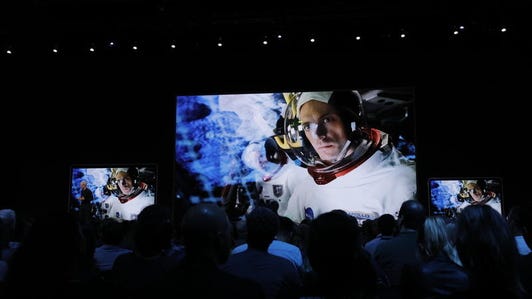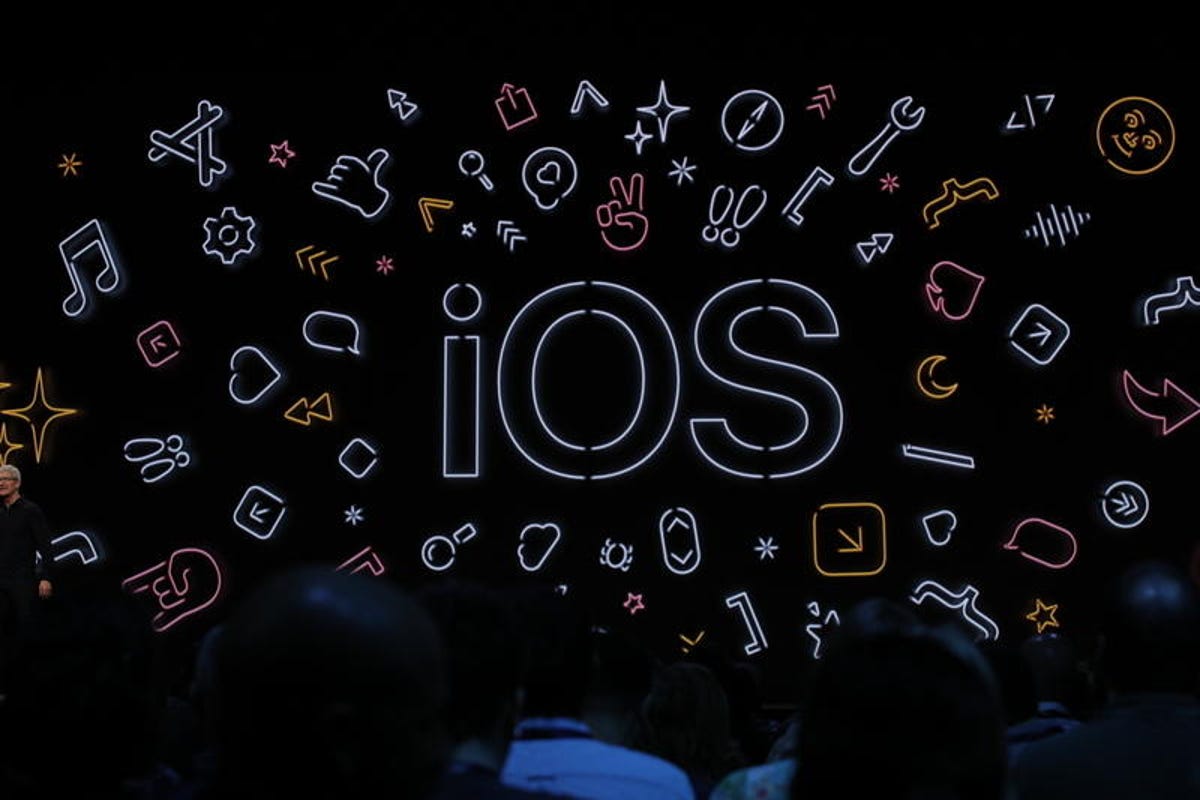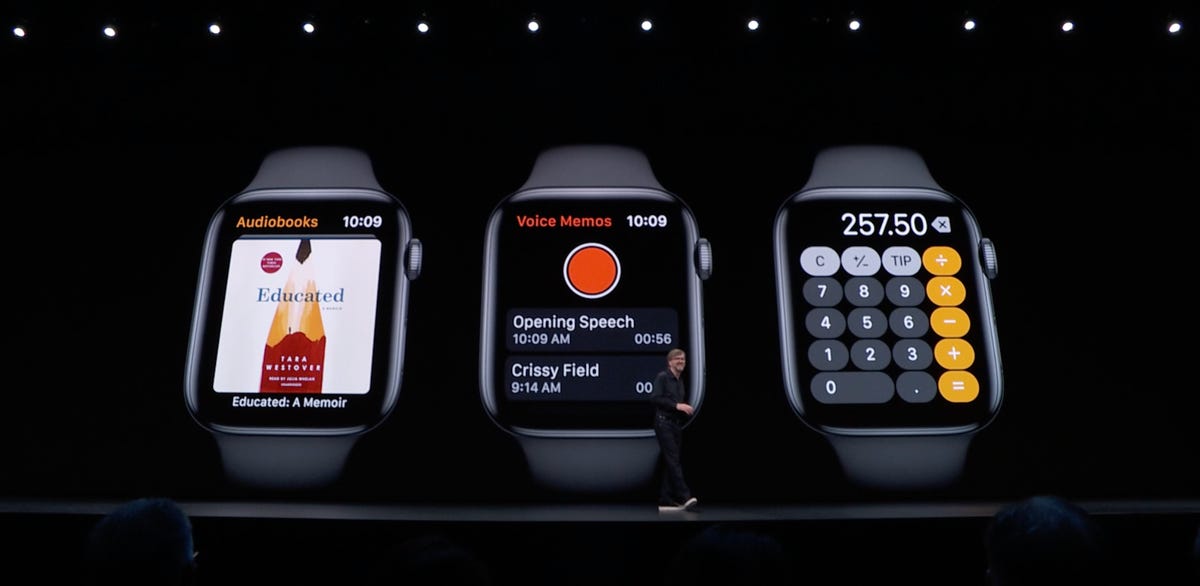This story is part of WWDC 2022, CNET’s complete coverage from and about Apple’s annual developers conference.
At Apple’s WWDC 2019, it’s like Marvel and DC Comics characters crossing over into the same movie. Or the Yankees and Red Sox sharing the same dugout. You can hear the exasperated voice of Seinfeld’s George Costanza: “Worlds are colliding!”
Well, sort of.
One of the marquee announcements during Monday’s keynote presentation at Apple’s confab for developers was the expansion of the company’s Marzipan program — now called Project Catalyst — which brings iOS apps to the Mac. We saw dribs and drabs of this last year when Apple brought homegrown programs like Apple News and Stocks to the Mac, but the company went further by opening the program to third-party developers.
Another big change is the introduction of iPadOS, a new operating system intended to give the iPad a more PC-like experience. Apple also said the iPad will be able to serve as a second screen for your MacBook.
These features are a little wonky, like everything else at this developers conference (or any developer conference), but taken together they get us closer to the long-hoped-for reality in which Apple unifies its smartphone, tablet and computer worlds. Having iOS apps run on Macs, and having a more useful iPad, might hint at a time when Apple’s dominant mobile operating system could take over computers, too.
For consumers, this ultimately means apps and services that run seamlessly across all their compatible devices. Or having one device that can handle all their needs, from hailing an Uber or livestreaming a family reunion to docking a phone to a connected monitor to serve as a desktop.
These are just a few of the big announcements at WWDC designed to shift the identities of Apple’s various products, including improvements to Siri; an Apple Watch that works more independently of the iPhone; a new, more powerful Mac Pro; and a faster iOS 13 with improvements like dark mode.
Bringing two worlds together
Having a single platform running everything has benefits for developers and consumers. For developers, being able to write to one platform makes the work much simpler. For consumers, having an app compatible with any device is a dream.
Before you get too excited, though, keep in mind that Apple has previously maintained that it prefers to keep its computers and mobile devices on separate platforms.
“We did spend a great deal of time looking at this a number of years ago and came to the conclusion that to make the best personal computer, you can’t try to turn MacOS into an iPhone,” Phil Schiller, head of Apple’s marketing, said in an interview with CNET in 2016. “Conversely, you can’t turn iOS into a Mac…. So each one is best at what they’re meant to be — and we take what makes sense to add from each, but without fundamentally changing them so they’re compromised.”
Instead, Apple is pushing a way for developers to bring iOS apps to a new platform.
“It’s a whole new way to bring new apps to the Mac,” Craig Federighi, head of Apple’s software business, said Monday.
WWDC 2019: A quick visual recap of Apple’s Worldwide Developers Conference keynote






Other companies have tried to bridge these two worlds. Microsoft got close, packing a near-full version of Windows into its smartphones. You could plug it into a monitor and have it serve as the brains of a desktoplike experience.
Of course, Microsoft killed off support for its smartphone line in 2017.
Google has also taken baby steps in this direction, bringing Android apps to the Chrome operating system, which powers its Chromebooks.
Perhaps Apple takes the lead in this tricky area of integrating two worlds. Considering it controls both the hardware and software, there isn’t a better company to try pulling this off.
Say hello to iPadOS
Apple’s iOS platform is one of the dominant operating systems on the planet, powering hundreds of millions of iPhones and iPads. But given its mobile roots, Apple has struggled to sell it as a true replacement for a Mac or PC.
In response, Apple introduced iPadOS to better take advantage of the larger display.
The new operating system gives you the ability to pin widgets and use split windows on the iPad. You can move between windows and apps too.

Apple has a lot going on with iOS.
James Martin/CNET
A faster iOS 13
One of the key themes for iOS 13 is speed.
Federighi said app load times are twice as fast, while Face ID unlocks 30% faster. App downloads are half the size, with updates coming in 60% smaller.
The once beleaguered app Apple Maps also got a big upgrade, with more-filled-out graphics and the ability to check out a 3D view of businesses, similar to Google Maps. But Apple showed off its smooth transition as you cruise through a street in that mode. You can also share up-to-date ETA info based on real-time traffic data.
But one of the biggest cheers came after the introduction of dark mode. Because who doesn’t sneak in a few extra minutes checking email while in bed?


Now playing:
Watch this:
Apple unveils all-new Mac Pro
6:00
Mac Pro redux
Another announcement that got big cheers was the unveiling of the updated Mac Pro. The superhigh-end machine, more of a box than the previous generation’s cylindrical design, is aimed toward creatives and other workers who require a powerful machine to create videos and other complicated graphics.
With the last update dating back to 2013, it was a long time coming. Many creatives had left the Mac world for more-powerful PC alternatives.
The new Mac Pro boasts a 28-core Intel Xeon processor, 1.5 terabytes of storage and powerful Radeon graphics chips from AMD.
That’s powerful enough to play three streams of 8K video or 12 streams of 4K video at the same time.
Oh, there’s also a stand accessory for $999.


Big news for Apple Watch users: The smartphone is getting its own app store.
Apple
Apple Watch loosens its collar
The Apple Watch continues to hold a dominant position in the smartwatch market, a niche area where other companies have struggled. Half the smartwatch market belongs to Apple, according to Strategy Analytics.
But your Apple Watch still relies on an iPhone for most of its functionality — especially on the app side.
Monday’s announcement gives the Apple Watch some independence, letting it load and run its own apps independent of an iPhone.
“We’re enabling a whole new generation of apps for Apple Watch,” said Kevin Lynch, head of the WatchOS business.
The Apple Watch gets its own App Store as well.
The result could be faster loading times, since it doesn’t need to talk to your iPhone to run an app, and better integration and use of the watch itself.
As with previous Apple events, the company stressed the health and wellness aspects of the Watch.
The Apple Watch will come with an activity trend feature to keep track of how often you’ve moved over the last few months versus the past year.
AR upgrades
Apple has talked about the promise of augmented reality, and it capped off its WWDC talk with an impressive demonstration of Minecraft, including a massive build occupying much of the large stage.
It showed off Apple’s people inclusion technology, which had one of the demonstrators actually stand in the Minecraft game.
“It’s a huge year for AR,” said Federighi.
AR has taken off as one of the hot tech trends, embraced by the likes of Google, Facebook and, yes, Apple. But it remains a niche area, more a novelty and gimmick for mainstream users, with developers still trying to figure out the killer app.
Apple hopes its new tools get to that killer app faster.


Now playing:
Watch this:
Apple beefs up privacy controls on iOS 13
3:34
Privacy
Apple kicked off the year with a privacy salvo at CES 2019, without formally setting up shop at the Las Vegas electronics extravaganza. Anyone walking through the front of the Las Vegas Convention Center, where Google’s booth was located, could see Apple’s tagline, “What happens on your iPhone, stays on your iPhone,” wrapped around the nearby Marriott SpringHill Suites.
The company returned to that sentiment Monday, noting several times that your data doesn’t leave the device. That included references to data used by things like Apple Watch and Apple Maps.
But iOS 13 takes it a step further: There’s now an option to sign in with Apple, authenticated through Face ID or Touch ID. This lets you sign into an app without offering your information. If you don’t want to share your actual email address, Apple also lets you share a randomized email that’s unique to the app. You can also tell an app that it can track your location only this once.
And Apple is cracking down on info-tracking based on Bluetooth and Wi-Fi.
“These security features are game-changing,” said Maribel Lopez, an analyst at Lopez Research.
For years now, Apple has prided itself on how it protects your data, from fighting off the FBI in court to keeping much of your information on your device, rather than send it over the cloud for processing.
Privacy has been a theme for tech giants in the last month or so. Facebook and Google each talked up privacy and the importance of your data at their own developer events. At Facebook’s F8 conference, for instance, the social network unveiled the mantra “The future is private.” Google executives at the Google I/O conference stressed that much of the company’s data-crunching occurs on your device and away from the cloud. Google CEO Sundar Pichai said “privacy cannot be a luxury good.”
Apple’s Federighi said he believes privacy is a “fundamental right” for everyone.
That’s assuming you’ve bought into Apple’s universe of products and services.
WWDC firehose
The Apple of the last few years isn’t known for making huge, sweeping changes all at once. It prefers to lay down the foundation of change with various features.
This year’s WWDC, however, offered a slew of changes big and small.
If these changes aren’t as dramatic as, say, Batman and Iron Man teaming up to fight the forces of evil, at least they’re a step in the right direction.
CNET’s Shara Tibken contributed to this story.
The story originally ran at 12:39 p.m. PT. Update at 2:51 p.m. PT: To include additional details and background.



